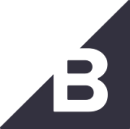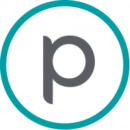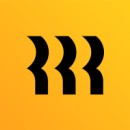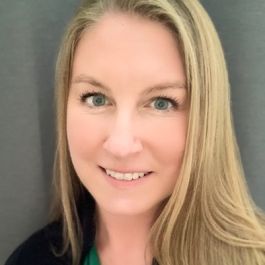
Engineers often work in fast-paced, agile environments, which is why frequent sync-ups are essential for helping them define priorities, discuss project updates and address pain points. Yet, unstructured or unproductive huddles can feel like a waste of time. That’s why leaders must do their best to run effective ones.
Running an effective team huddle can mean different things depending on the professional. For some, leading efficient sync-ups requires creating a set agenda before each meeting. On the other hand, some leaders create more productive sync-ups by asking team members to hold questions until the end of each meeting. But regardless of the approach, the objective is the same: to save everyone time.
For leaders of remote teams, maintaining a sense of connectedness in sync-ups is especially important. After all, team huddles not only allow coworkers to discuss important issues but also offer them the chance to catch up with each other and develop personal relationships with colleagues.
Built In San Francisco caught up with eight local tech professionals to learn how they run engaging and productive sync-ups — even while working from home.
BigCommerce is on a mission to “revolutionize commerce” with its open SaaS platform that empowers e-commerce businesses to build, innovate and grow their brands.
Engineering Manager Erik Christensen shared how he’s tweaked daily huddles for remote life to allow for organic conversation and ad-hoc problem-solving.
What does a typical sync-up look like for your team, and how do you structure those meetings to ensure they're as effective/productive as possible?
The core of our daily standup is similar to many Agile companies, with each member of the team discussing what they’ve completed, what they’re working on and any blockers they’ve encountered. We don’t follow the strict “only talk about what you completed and will complete” rule, as I actually find updates on what people are currently working on to be very valuable, especially in a remote environment. We keep this meeting to 15 minutes and generally postpone any discussions until after the standup.
What’s one thing you’ve done to improve the effectiveness of your stand-up meetings? What were the results?
While we haven’t tweaked the core formula of our standups much, we’ve changed what happens before and after the meeting. With less face-to-face contact, the daily stand-up has actually grown in importance, as it now serves a similar role to morning coffee runs in the office. People are actually arriving early to our stand-up meetings just to chat with their co-workers, which allows for a much less abrupt start to the day. Making sure there aren’t any recurring meetings booked prior to the standup allows for this to happen organically.
Similarly, we’ve seen a need for more small, ad-hoc meetings after the standup. Typically, there will be one or two friction points we notice during people’s updates, and we use the time after the standup to resolve these issues. These may be brief debates on what technical approach to take or clarification of product requirements. Having these discussions immediately after the standup allows us to resolve them quickly and naturally invites other team members who are curious about the issue to hang around for a few minutes after the meeting to hear what other team members are working on.
With less face-to-face contact, the daily stand-up has actually grown in importance.’’
Sync-up meetings can have a tendency to feel repetitive or boring after a while. What’s one strategy you’ve found to be critical for keeping employees engaged throughout these meetings?
A few months into our fully remote situation, I noticed the team was beginning to feel a bit more fragmented than usual. We were working on a number of projects concurrently, which resulted in most engineers having solo projects that didn’t intersect much with anyone else’s work. Without the office environment, ad-hoc discussions about other people’s work became far less common, and isolated silos of domain knowledge were growing. As a result, our standups started to feel like dry, rote status updates.
One of the engineers on my team suggested doing a design workshop to break things up and get the team more involved. Our team’s designer planned and ran a three-day workshop roughly based on the design sprint model.
We used Miro to visually brainstorm instead of the whiteboards we normally have availible in office. The team ended up loving the tool, and we actually found it better for large group collaboration. As an added benefit, it’s a lot easier to keep the artifacts from the workshop easily accessible now that we don’t have to store enormous rolls of butcher paper with Post-its all over them.
Sendoso aims to help companies more closely engage with buyers and consumers. The company helps sales, marketing and CX teams engage at strategic points throughout the customer journey, which drives more pipeline and revenue.
Chief Technology Officer Qaseem Shaikh shared how his team prefers structured standups and why it's important to have everyone take turns leading sync-ups.
What does a typical sync-up look like for your team?
Anyone can start each standup. After giving their update, each person nominates who will go next. After weekends and holidays, people usually share fun stories and updates about what they did. Every standup typically covers what each person worked on the day before, what they’re working on that day and any blockers that may have come up as well as any callouts.
What’s one thing you’ve done to improve the effectiveness of your sync-up meetings? What were the results?
We’ve adopted three strategies: keep updates short, take longer discussions offline and allow team members to give asynchronous updates on Slack if they can’t make the meeting.
As a result, each team member stays within the time limit and has greater flexibility while continuing to have deeper conversations when necessary.
Take longer discussions offline and allow team members to give asynchronous updates on Slack.
What's one strategy you’ve found to be critical for keeping employees engaged throughout these meetings?
One thing that has helped us is that we don’t have a set order in which people lead each sync-up. It keeps everyone engaged, considering they know they could be nominated next.
Planet believes life on Earth can be better understood from space. The company designs, builds and operates Earth-imaging satellites, which deliver a dataset of geospatial imagery used to help solve some of the world’s critical problems, like forest clearing and natural disasters. Every three or four months, Planet launches new satellites into orbit.
Engineering Manager Kattia Flores Pozo discusses how her team uses sync-ups to address important issues and foster team spirit — even from across time zones.
What does a typical sync-up look like for your team?
Since we are a geographically distributed team, sync-ups are very important, especially considering that we need to make concessions to match different time zones. At the start of the week, I sync with the lead of our team in San Francisco, and we decide on topics that need to be discussed between both groups. We inform the team beforehand and ask if there are additional topics they want to bring up during the meeting so we can structure and prioritize an agenda. During the meeting, one person will lead the discussion on each topic, and we make sure to capture actions and follow-ups at the end of the discussion.
Prior to any sync-up meeting, I always try to make sure I provide a list of bullet points of the topics I wish to cover, any additional documentation needed beforehand or links to resources that will be used in the meeting, so people have time to review.
What's one thing you've done to improve the effectiveness of your stand-up meetings?
We give standups aggregated value. When we were all working together in the office, standups were mostly used to report what each of us was going to work on that day. Other discussions or asks from team members would naturally occur in person. When we switched to working remotely due to the pandemic, the stand-up meetings became a time where the team had a chance not only to report statuses but also bring up discussions that needed to trigger action within the team. These meetings also allow everyone to check on each other and foster team spirit, which is especially important if we have colleagues starting remotely.
It’s important to make sure everyone gets the opportunity to discuss their work during sync-up meetings.’’
What’s one strategy you’ve found to be critical for keeping employees engaged throughout these meetings?
To keep everyone engaged, it’s important to make sure everyone gets the opportunity to discuss their work during sync-up meetings. If there are immediate topics that need to be discussed, we will prioritize that, but we make sure we have a list of mixed upcoming topics. In space operations, we are always working on multiple topics and issues at the same time, so discussions are never repetitive.
Rippling is on a mission to “free companies from the burden of administrative work.” The company’s platform allows organizations to manage and automate all of their people operations, from onboarding to payroll and benefits.
Engineering Manager Michael Sung shared why his team thinks of sync-ups as forward-thinking and customer-focused, rather than task-based.
What does a typical sync-up look like for your team?
Nearly every day of the week, we have a standup related to the product we work on. The standup is customer-focused and cross-functional. Our product development, support, sales and implementation teams all participate. While product development and support are present every day, other teams can optionally jump in or out as needed. We’re also a remote group, so the meeting is over video call. Our participants are based in places ranging from California to Florida. We structure the standup as a forward-facing, round-robin meeting, in which everyone talks about customer priorities and how these priorities affect the day’s plans.
What’s one thing you’ve done to improve the effectiveness of your stand-up meetings?
I think the most effective improvement to our standups has been something we actually changed outside the standup. We increased the frequency of our longer-term roadmap planning. When discussing priorities during standups, some requests end up being larger features that need to be planned in a separate roadmap meeting. Early on, we did roadmap planning at a quarterly cadence. The three months spent waiting for roadmap updates would often feel too long, and people would get out of sync on the roadmap, leading to longer, follow-up conversations. Once we rescheduled our roadmap meetings to occur monthly, we were able to more closely connect the roadmap to the customer and provide a stronger focus on the day-to-day during our standups.
Discussions are forward-facing and customer-focused rather than backwards-facing and task-focused.’’
What’s one strategy you’ve found to be critical for keeping employees engaged throughout these meetings?
I think we have strong engagement in our standups because discussions are forward-facing and customer-focused rather than backwards-facing and task-focused. By connecting how changes to the product affect our customers, we keep everyone in the standup engaged and focused on freeing smart people to work on hard problems.
The home buying and selling process is often unnecessarily stressful. HomeLight wants to change that. The company analyzes millions of real estate transactions to help home buyers and sellers find the right agents in their area.
Vice President of Engineering Mike Abner shared why he lets individual managers and team leads decide how to structure sync-ups.
What does a typical sync-up look like for your team?
As a vice president, it’s nearly impossible for me to attend our team’s many daily standups. At HomeLight, the individual team managers are free to run their standups in the way that works for them and their teams without significant oversight. I actively encourage our team to define and host standups that work best for them. We’ve found this to be an incredibly helpful approach, especially since our worlds have been turned upside down due to COVID-19. The goal of each standup is to tackle blockers or pain points, support team cohesion and keep our spirits high while working remotely.
What's one thing you've done to improve the effectiveness of your stand-up meetings?
I’ve found it effective to encourage each manager and team to lead standups that work for them rather than relying on a companywide template. As a result, the standups have naturally evolved to be as effective as possible for each team.
There are a few examples of how teams have done this. For instance, Marty, an engineering manager in our Seattle office, has incorporated a “Guess which band t-shirt Charlie is wearing” game at every standup to keep things fresh. Charlie, an avid guitar player and musician, has an extensive collection of band t-shirts. At the beginning of each standup, he keeps his Zoom video off, answers a few questions from the team, plays a riff on the guitar from one of the band’s songs and then has the team try to guess the band before kicking off the typical stand-up rituals.
Steve, an engineering manager in our Scottsdale office, has his team post their short status updates in a dedicated Slack channel 30 minutes before their stand-up meeting, so they can use their stand-up time to get right to the pain points and use the rest of the time as an informal team event where they can chat about life, world events or what they’re currently binge-watching.
Standups in a remote work world can be a time for some unstructured team-building.’’
What’s one strategy you’ve found to be critical for keeping employees engaged throughout these meetings?
In the age of COVID-19 and remote work, we’ve tried to make each standup more than just a super efficient check-in and, instead, use each one as a chance for team-building and cohesion. This was less important when each team was in an office together, but in a Zoom-focused world, you miss those spontaneous moments in the day that help build relationships. Standups in a remote work world can be a time for some unstructured team-building. We’ve tried to take advantage of that without it feeling forced.
Liftoff+Vungle wants to transform the way people discover and experience apps. The company partners with app developers and publishers to monetize their apps through ad experiences, thus helping them increase engagement and drive revenue.
Senior Technical Program Manager Renee Juszczak told us why it’s important to leave a few minutes at the end of every sync for open questions.
What does a typical sync-up look like for your team?
Every day, we have 15-minute standups. I am currently working with multiple teams in different time zones. The high-level meeting structure we follow starts with each team member providing an update followed by time at the end for questions. I kick off each standup by sharing my screen via Google Meet and presenting our current sprint board in Jira. Following the same order each day, I ask each developer for their update, which covers what they have been working on or completed over the past day, their plan for the current day and any blockers they may have. I then move on to QA for their updates and then, finally, product. The sprint board I present in standups has the ability to filter work specific to each team member. At times, I find it helpful to use these sprint board filters to show the tickets per team member as they provide their update.
What’s one thing you’ve done to improve the effectiveness of your stand-up meetings?
It is inevitable that team members will want to ask each other questions, especially while working remotely. Standups should be a reliable daily meeting that everyone on the team attends. With everyone already on a call together, using the last several minutes to address open questions is an effective way to quickly help team members. If open questions cannot be resolved quickly, a separate meeting can be scheduled to sort through the issues. However, make sure you do not mix Q&A time with individual team updates, as this will derail your standup and cause the meeting to exceed your scheduled time.
Maintain a consistent structure and set aside time to openly discuss questions.’’
What’s one strategy you’ve found to be critical for keeping employees engaged throughout these meetings?
Efficient and engaging standups can be created by maintaining a consistent structure and setting aside time to openly discuss questions.
Expedia Group helped define the travel industry upon its inception in 1996. Today, the company boasts a portfolio of travel brands including Hotels.com, Travelocity and Vrbo.
Senior Development Manager Norman Fletcher shared why it’s important to shake up the routine of sync-ups to keep team members engaged and focused, even if it’s as simple as changing the order that everyone presents their work.
What does a typical sync-up look like for your team?
We are a global company with offices on six continents and personnel collaborating from multiple locations. This requires a flexible work schedule to accommodate the various time regions, especially given COVID-19, since most employees are working from home.
Currently, for remote sprint ceremonies, we use messaging tools like Bluejeans, Slack and StatusHero integrated with project management tools like Jira and GitHub to compile team stand-up activities and code check-in statuses into a single report we can review and share. This helps teams retain focus by granting continuous clarity on accomplishments, intentions and blockers across workflows. For every meeting, particularly standups, we decide on frequency, a structure and a time cap. We ask every team member to take turns leading a meeting. Individuals create agendas and talking points, all with an emphasis on brevity. Many companies have embraced stand-up meetings because the format keeps gatherings concise.
What best practices does your team follow to make standups more effective?
- Create an agenda in advance and set objectives for the meeting. Invite only those who need to be there so everyone else can have dedicated work hours.
- Share your screen while presenting. This keeps everyone on the same page and allows them to see exactly what we are talking about.
- Stay on track. Check in throughout the meeting to make sure we are meeting the objectives and accomplishing what we set out to do.
- Start and end on time.
- Include everyone. Open-ended questions can lead to many people talking at once, so make sure to promote turn-taking. Let team members know they can participate, but give them time to formulate their responses. When asking questions, be direct by calling people out by name.
What’s one strategy you’ve found to be critical for keeping employees engaged throughout these meetings?
When people know what to expect, they tend to lose interest. Because daily stand-up meetings are routine by nature, you need to vary the routine in order to keep people engaged. For example, if a typical stand-up meeting agenda includes going around the room anti-clockwise and hearing from each person, we put everyone’s name in a hat and draw to see who goes next or have a daily secret word to keep people listening closely.
Quantcast aims to simplify advertising on the internet through AI. The company’s audience behavior platform directly quantifies over 100 million web and mobile destinations.
Head of Engineering Oscar Gothberg weighed in on why it’s crucial to be “the stand-up participant you want others to be.”
What does a typical sync-up look like for your team?
In our daily standups, team members do a quick round of status updates where each of them shares what they are currently working on, any obstacles they’re facing and other important information. Each person’s update is quick and to the point.
The standup is an opportunity for everyone on the team to stay updated on what's going on, ask questions, ask for (and offer) help and receive early warning about anything going pear-shaped. Sharing daily tasks out loud also helps people keep themselves accountable.
What’s one thing you’ve done to improve the effectiveness of your stand-up meetings?
If a conversation gets long-winded, I suggest the participants take it offline. The standup is democratic in the sense that everyone participates on an equal footing. This means that if the meetings are unfocused or ineffective, you can lead by example to make them better. Be the stand-up participant you want others to be.
Be the stand-up participant you want others to be.’’
What’s one strategy you’ve found to be critical for keeping employees engaged throughout these meetings?
Keep them brief. Standups are for letting your team know what you’re about to do, or call out that you need help with something. They’re not used to discuss any one topic at length.
Also, start on time. Standups are frequent and light-touch, and having a team member join late or miss one once in a while shouldn’t be the end of the world. So if someone is late, just start and finish without them, if necessary.




















